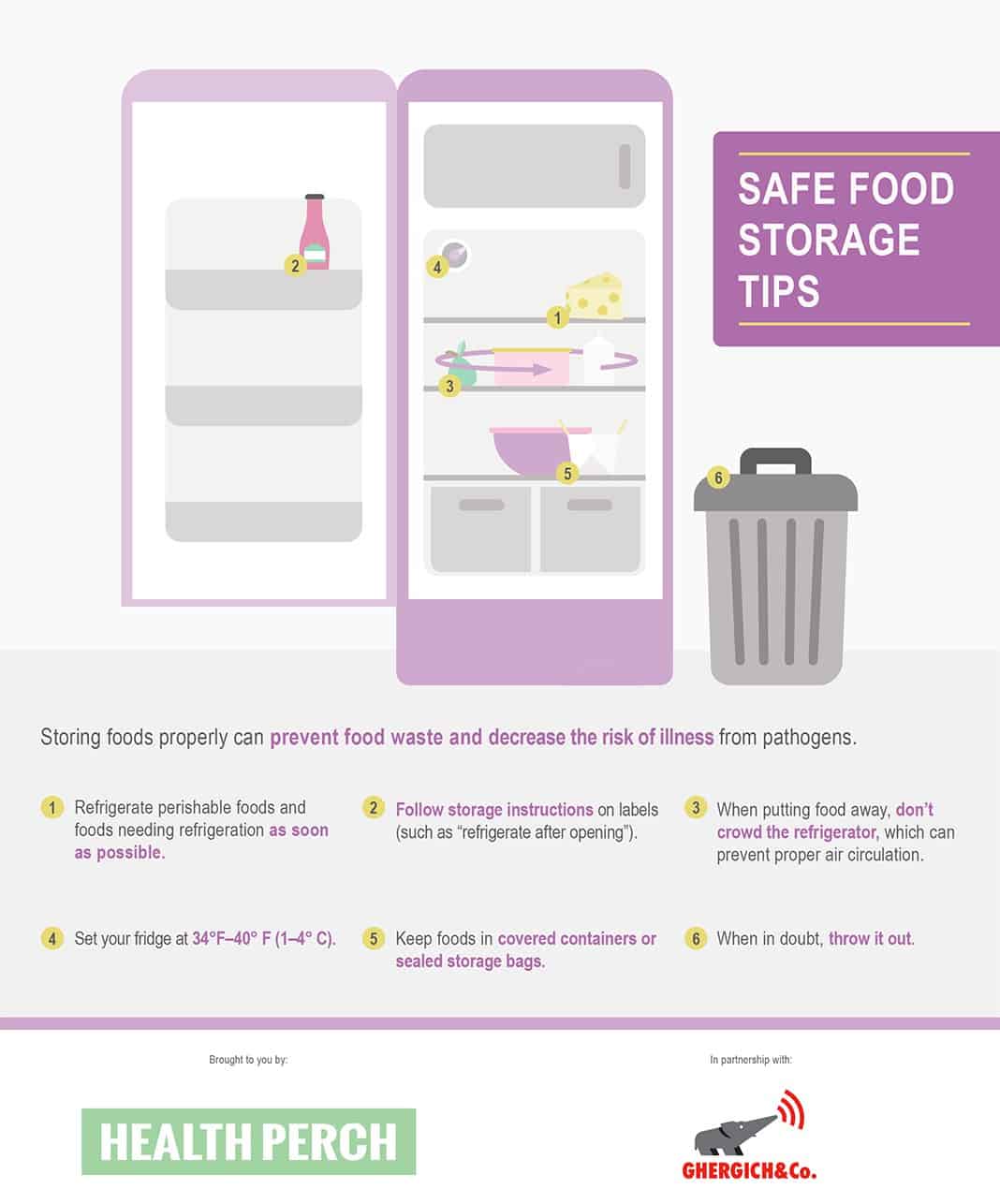Storing food in the right place isn’t just about flavor, it’s about food safety. Some foods in your pantry or on your counter should be refrigerated—and some guidelines might surprise you. Here are 13 foods that should go from your pantry to the fridge.

Condiments
Ketchup, mustard, mayo, horseradish, and barbecue sauce can contain enough vinegar or other acid to make them shelf-stable, but once opened, refrigeration keeps them fresher longer. Opened mayo may be stored in the fridge for up to a month, and ketchup, mustards, and barbecue sauce for up to a year.
Fruit spreads
Fruit spreads such as jams and jellies should be stored in the fridge, which helps prevent mold. A typical fruit spread (such as grape jelly or orange marmalade) can be refrigerated for up to a year, sugar-free spreads for up to nine months, and fruit butters (such as apple butter or pumpkin butter) or curds for two months.
Citrus fruits
Oranges, lemons, and limes may last for up to two weeks on the counter, but they’ll last up to two months when refrigerated.
Whole nuts, nut flours, nut butters, and nut oils
If it’s a nut, chill it. (The one exception: peanut spreads that contain other oils or ingredients that stabilize them for shelf storage.) Otherwise, the oils in nuts turn rancid sooner at room temperature; this applies to coconut oil and coconut butter, too. Peanut butter can keep up to a year in the fridge or about two months for all-natural and/or organic varieties. Whole nuts keep for up to a year (except pine nuts, which stay fresh for about three months).
Cured meats and charcuterie
Curing meats is a long-used pre-refrigeration food preservation method, but the salami, pepperoni, prosciutto, smoked sausage, ham, or other charcuterie you brought home still store best in the fridge. While less likely than raw meat to host harmful bacteria, cured meats stored in the pantry can be more likely to become pathogen parties, especially once you open the package. Store in the fridge up to four weeks.
Soy, rice, and nut milks
Unopened plant-based milks can be safely stored in the pantry (just check the date on the label so you use it in time). Once opened, however, move that carton of soy, rice, or almond milk to the fridge. Then you’ll want to use it within a week.
Unsalted butter
Yes, butter stored on the counter is easier to spread, but only do that with salted butter. Unsalted butter lacks salt’s preservation qualities and therefore needs to be chilled. Store unsalted butter in a covered preferably airtight container for up to two weeks. When it’s time to use it, take out the amount you need an hour ahead of time to soften.
Whole-grain flours
Similar to nuts, whole-grain flours are more perishable than refined all-purpose flours. While the oils from whole grains provide more flavor and nutrition, those same oils can turn rancid. Move whole-grain flour from its paper bag to an airtight container in the fridge where it can keep for up to a year.
Soy sauce
The high salt content of soy sauce means you can keep this Asian cuisine staple at room temperature, but storing it in the fridge will stabilize its flavor and aroma and preserve its fresh character for up to three years.
Pure maple syrup
Straight-up, 100-percent maple syrup is mold-prone and more perishable than “pancake syrup,” which is typically made with sugar or corn syrup. When your latest family pancake or waffle feast is over, pop the real McCoy in the fridge. Even an opened bottle can stay fresh in the fridge almost indefinitely.
Tortillas
An unopened pack of tortillas can stay in the pantry. However, an open pack of flour or corn tortillas can turn rancid or get moldy within a week. An open pack of flour tortillas can keep in the fridge for up to a month or for corn tortillas, up to two months.
Dried fruits
Raisins, dried cranberries, and other dried fruits have had most of their moisture content removed, which extends shelf life. However, dried fruits can still stay fresher longer when refrigerated. You can store unopened packages for up to two years and one year once opened.
Ripe bananas
Banana storage is all about strategy. Let green bananas ripen at room temperature; don’t refrigerate unripe bananas. Cold temperatures can derail ripening, even if the banana is warmed back up. Once ripe, pop the bananas into the fridge. The peels will turn brown, but the banana inside will remain ripe and ready to eat for another two to nine days.
Conclusion
Storing food safely is all about knowing what items are best suited for the pantry and what should be refrigerated instead. By moving these 13 foods into cold storage, you can enjoy them longer—while stretching your family budget and decreasing food waste.


